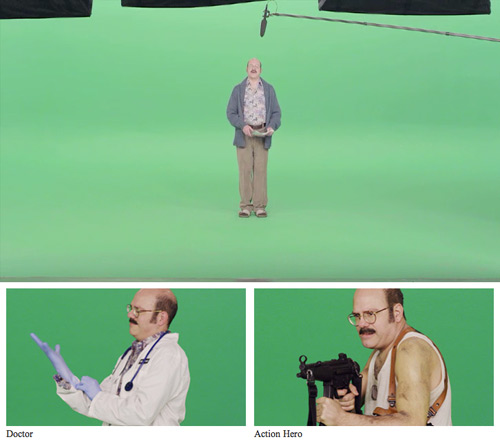‘We live not alone but chained to a creature of a different kingdom: our body.’ –Proust

Edward Glaeser: If you look back 120 years ago or so, Detroit looked like one of the most entrepreneurial places on the planet. It seemed as if there was an automotive genius on every street corner. If you look back 60 years ago, Detroit was among the most productive places on the planet, with the companies that were formed by those automotive geniuses coming to fruition and producing cars that were the technological wonder of the world. So, Detroit’s decline is of more recent heritage, of the past 50 years. […] And it tells us a great deal about the way that cities work and the way that local economies function. […] If we go back to those small-scale entrepreneurs of 120 years ago–it’s not just Henry Ford; it’s the Dodge brothers, the Fisher brothers, David Dunbar Buick, Billy Durant nearby Flint–all of these men were trying to figure out how to solve this technological problem, making the automobile cost effective, produce cheap, solid cars for ordinary people to run in the world. They managed to do that, Ford above all, by taking advantage of each other’s ideas, each other supplies, financing that was collaboratively arranged. And together they were able to achieve this remarkable technological feat. The problem was the big idea was a vast, vertically integrated factory. And that’s a great recipe for short run productivity, but a really bad recipe for long run reinvention. And a bad recipe for urban areas more generally, because once you’ve got a River Rouge plant, once you’ve got this mass vertically integrated factory, it doesn’t need the city; it doesn’t give to the city. It’s very, very productive but you could move it outside the city, as indeed Ford did when he moved his plant from the central city of Detroit to River Rouge. And then of course once you are at this stage of the technology of an industry, you can move those plants to wherever it is that cost minimization dictates you should go. And that’s of course exactly what happens. Jobs first suburbanized, then moved to lower cost areas. The work of Tom Holmes at the U. of Minnesota shows how remarkable the difference is in state policies towards unions, labor, how powerful those policies were in explaining industrial growth after 1947. And of course it globalizes. It leaves cities altogether. […] It was precisely because Detroit had these incredibly productive machines that they squeezed out all other sources of invention–rather than having lots of small entrepreneurs you had middle managers for General Motors (GM) and Ford. […]
Russ Roberts: So, one way to describe what you are saying is in the early part of the 20th century, Detroit was something like Silicon Valley, a hub of creative talent, a lot of complementarity between the ideas and the supply chain and interactions between those people that all came together. Lots of competition, which encouraged people to try harder and innovate, or do the best they could. Are you suggesting then that Silicon Valley is prone to this kind of change at some point? If the computer were to become less important somewhere down the road or produced in a different way?
Edward Glaeser: The question is to what extent do the Silicon Valley firms become dominated by very strong returns to scale, a few dominant firms capitalize on it. I think it’s built into the genes of every industry that they will eventually decline. The question is whether or not the region then reinvents itself. And there are two things that enable particular regions to reinvent themselves. One is skills, measured education, human capital. The year, the share or the fraction in the metropolitan area with a college degree as of 1940 or 1960 or 1970 has been a very good predictor of whether, particularly northeastern or northwestern metropolitan areas, have been able to turn themselves around. And a particular form of human capital, entrepreneurial human capital, also seems to be critical, despite the fact that our proxies for entrepreneurial talent are relatively weak. We typically use things like the number of establishments per worker in a given area, or the share of employment in startups from some initial time period. Those weak proxies are still very, very strong predictors of urban regeneration, places that have lots of little firms have managed to do much better than places that were dominated by a few large firms, particularly if they are in a single industry. So, let’s think for a second about Silicon Valley. Silicon Valley has lots of skilled workers. That’s good. But what I don’t know is whether Silicon Valley is going to look like it’s dominated by a few large firms, Google playing the role of General Motors. Or whether or not it will continue to have lots of little startups. There’s nothing wrong with big firms in terms of productivity. But they tend to train middle managers, not entrepreneurs.
image { Michael Wolf }



















